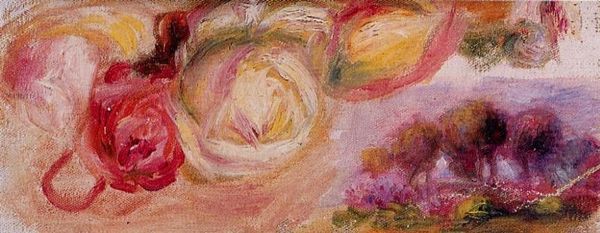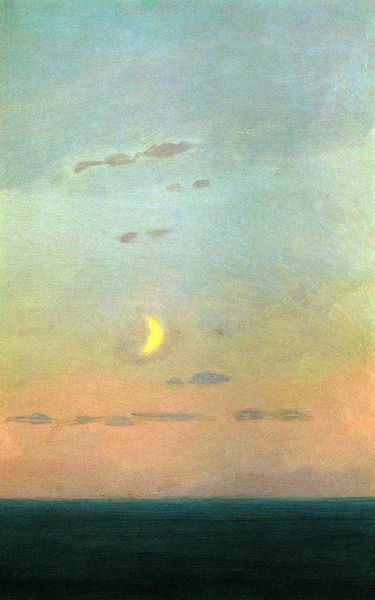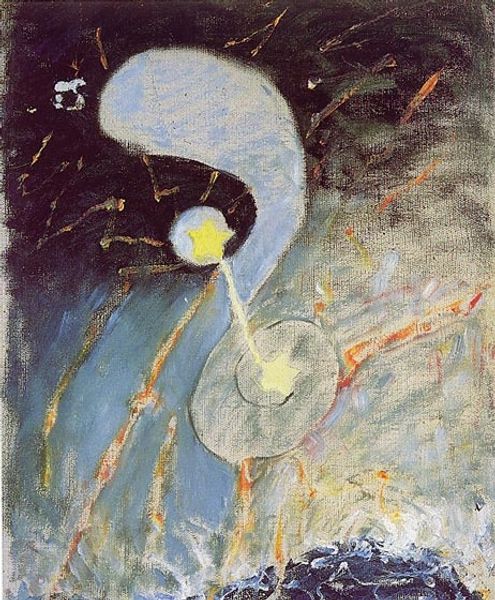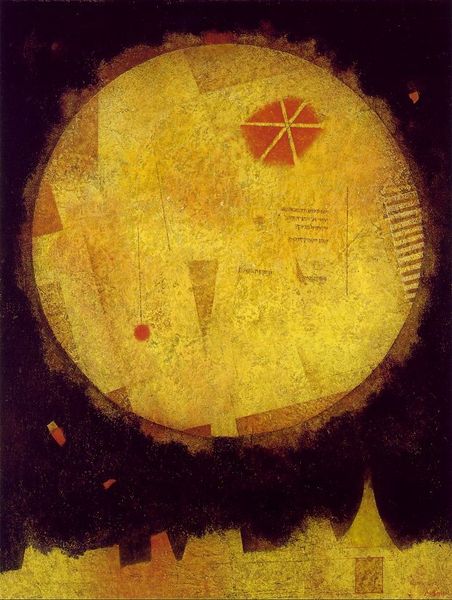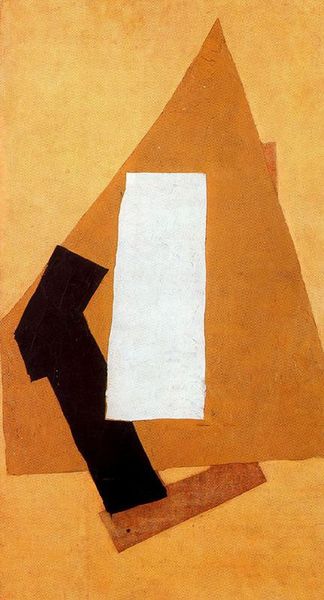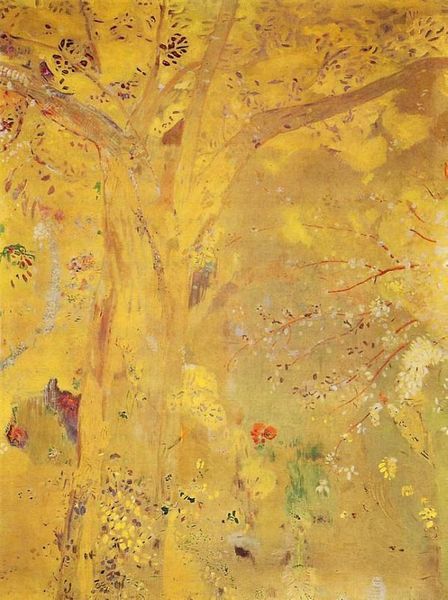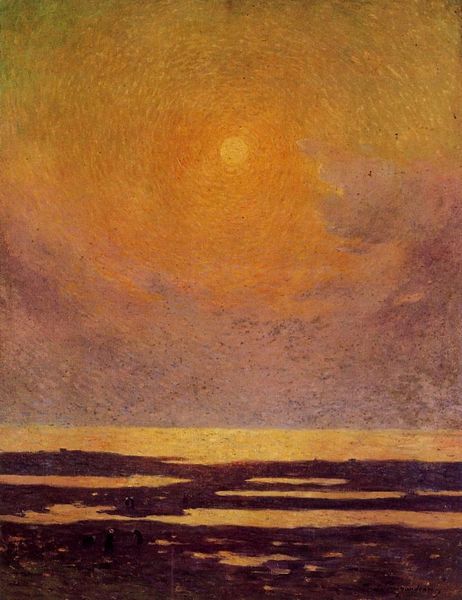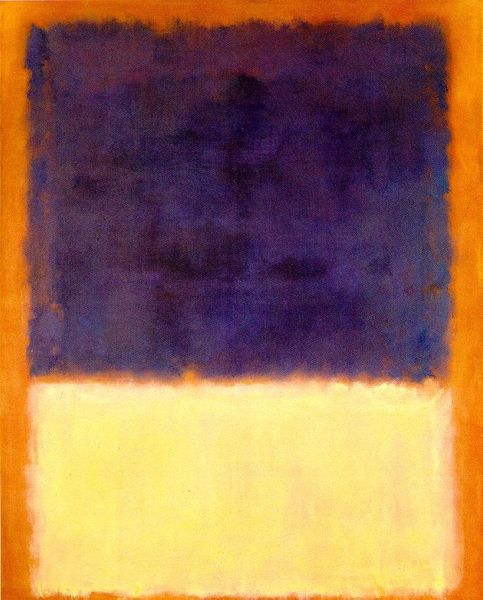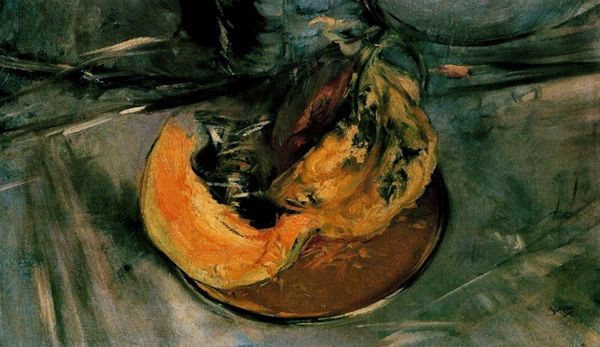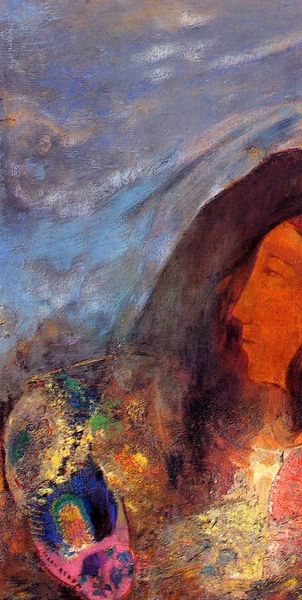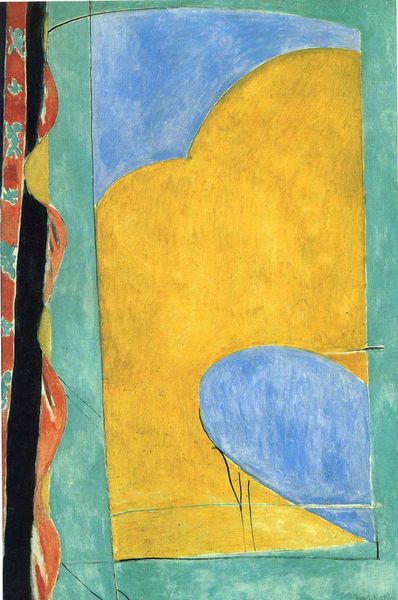
painting, oil-paint
#
portrait
#
animal
#
painting
#
oil-paint
#
landscape
#
figuration
#
oil painting
#
symbolism
#
post-impressionism
Copyright: Public domain
Editor: Here we have Paul Gauguin’s “A Little Cat” from 1888, oil on canvas. The stark black silhouette against the golden hues and simple shapes…it feels almost like a memory or a symbol rather than a straightforward portrait. What catches your eye when you look at it? Curator: Well, I find it endlessly intriguing! It's so much more than a simple cat picture. The flattened perspective, those vibrant orbs looming above the cat – they evoke a dreamlike quality. The limited color palette intensifies the feeling. He reduces forms to their essence. It’s like looking at the world through a very selective, emotional lens. What do those colored spheres mean to you? Editor: That’s interesting… I hadn't considered their dreamlike effect so directly. I thought they might just be simplified, abstract representations of landforms. Hills, maybe? Does this simplification tie into his Symbolist leanings, focusing on essence over detail? Curator: Precisely! It's a symbolic landscape, not a literal one. He wasn’t merely painting what he saw; he was painting what he felt, using color and form to convey emotion and deeper meaning. It anticipates so much of modern art, that move away from pure representation. A leap of faith, really! He is asking viewers to complete the picture with their own imagination and inner vision, rather than documenting observable nature. Editor: It really shifts my understanding seeing it that way. Thanks! Curator: My pleasure. It invites you to find what stirs in your own soul when you look at art.
Comments
No comments
Be the first to comment and join the conversation on the ultimate creative platform.
